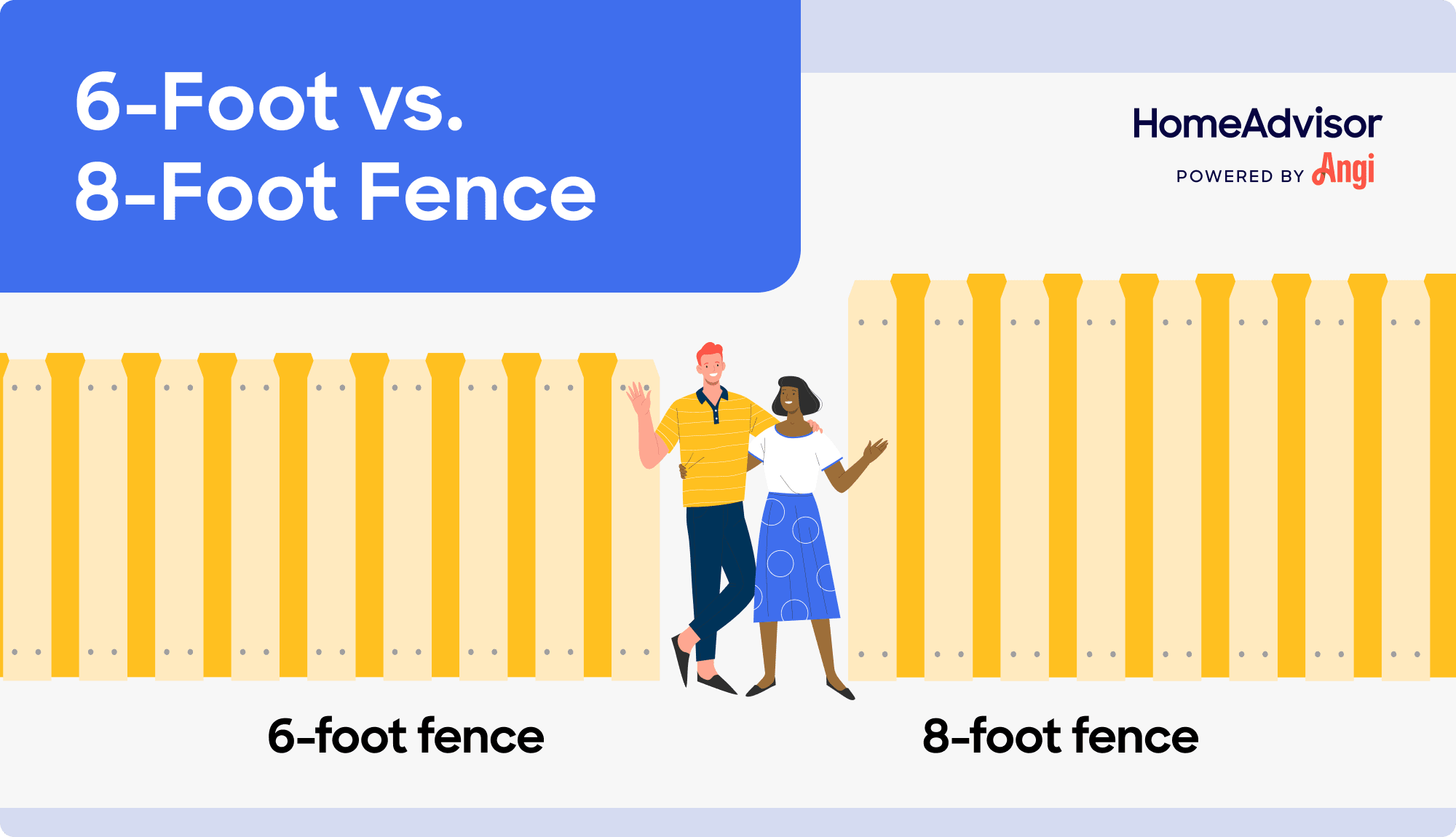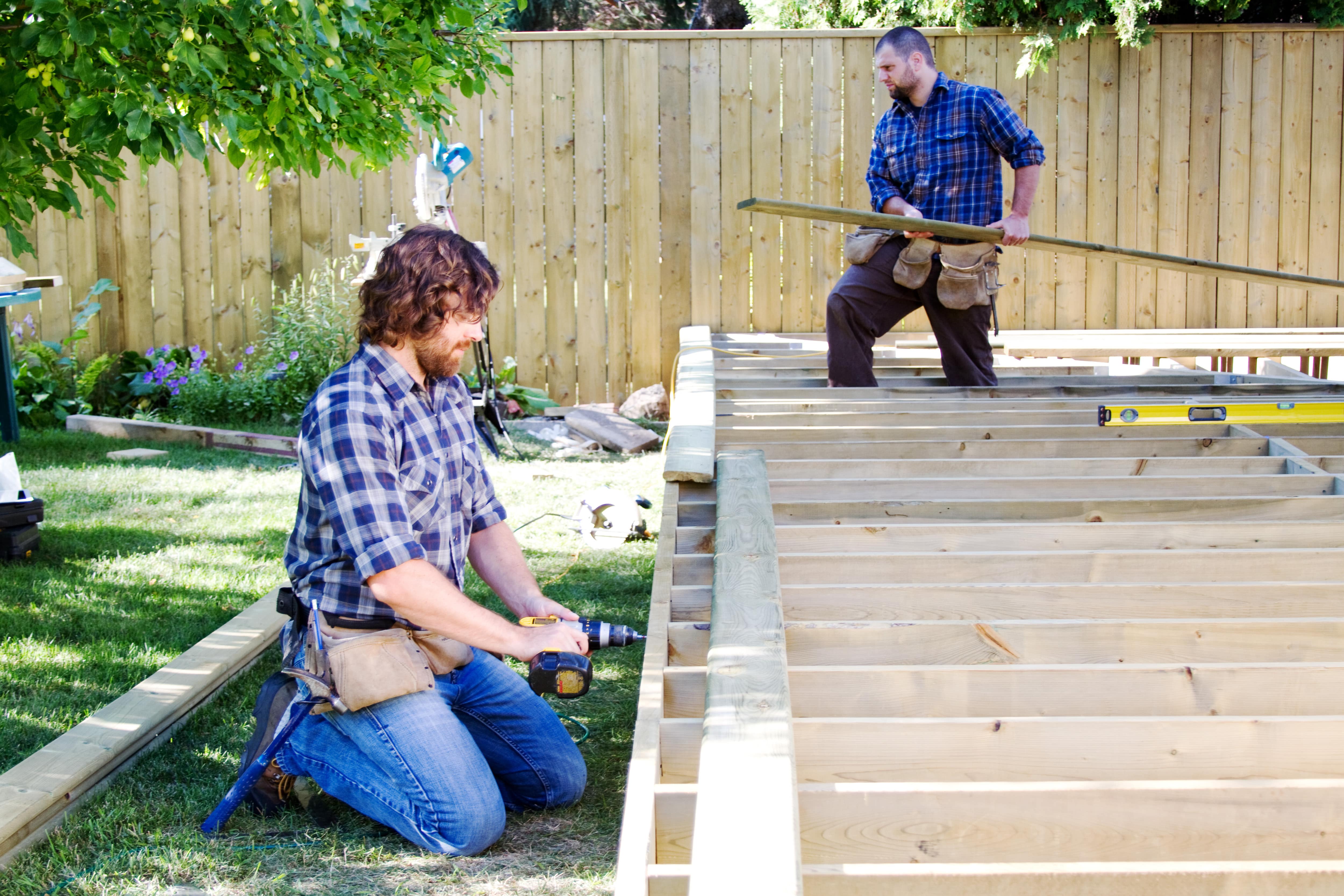
Find out who to hire to replace porch columns, when to call carpenters or masons, what it costs, and how pros get it done.
Composite fencing costs $4,200 to $28,000 or an average of $16,000. Fence height, length, materials, terrain, and additional features all impact cost.


Composite fencing installation costs an average of $16,000, ranging from $4,200 to $28,000.
Costs per linear foot vary between $11 and $45, depending on materials and installation.
Factors influencing cost include fence height, extra features, gate additions, and frame type.
Composite fences require minimal maintenance and can last over 30 years.
Hiring a professional ensures proper installation and maximizes the fence's lifespan.
This article was updated using automation technology and thoroughly reviewed for accuracy by HomeAdvisor Editor Ryan Noonan.
If you're considering installing a composite fence, you can expect to spend an average of $16,000, with most homeowners paying between $4,200 and $28,000. On a per linear foot basis, costs range from $11 to $45. Factors like fence size, location, and material quality significantly impact your total cost. We'll help you understand what affects the price so you can budget effectively and get the best value for your composite fence project.
| Average Cost | Low Cost | High Cost |
|---|---|---|
| $28 per linear foot | $11 per linear foot | $45 per linear foot |
Composite fencing materials start at $9 per linear foot but can go up to $45 per linear foot for high-end options. The height, style, and type of fence you choose will impact your overall cost. For example, opting for an affordable, off-brand composite fence that's only 4 feet high will cost significantly less than choosing a premium brand, 7-foot privacy fence with an ornate design and a top trellis.
Expect to pay $10 to $30 per linear foot for labor when installing composite fencing. Some companies may quote by the hour, typically around $20 to $60 per hour. Labor costs depend on factors like your location, accessibility issues, and the terrain of your property. If your property has uneven ground or a steep incline, installation will be more challenging, which can increase fence building costs due to the extra time and effort required.
Composite fencing costs $11 to $45 per linear foot with installation. Let's look at some standard fencing lengths and their associated costs.
| Linear Feet | Cost Range | Average Cost |
|---|---|---|
| 150 | $1,650 – $6,750 | $4,200 |
| 200 | $2,200 – $9,000 | $5,600 |
| 300 | $3,300 – $13,500 | $8,400 |
| 500 | $5,500 – $22,500 | $14,000 |
| 750 | $8,250 – $33,750 | $21,000 |
| 1,000 | $11,000 – $45,000 | $28,000 |
Different types of fencing use different amounts of materials based on their height and composition.
Expect to pay toward the lower end of the range for picket fencing, at around $11 to $15 per linear foot with installation. Picket fencing is usually no taller than 4 feet. It uses fewer materials per linear foot than other composite fencing types because of its style, which has individual pickets spaced a few inches apart.
Privacy fencing with standard board panels comes in at $22 to $34 per linear foot with installation. This mid-range option provides more privacy because it's taller and uses large panels that butt up against one another, blocking the view from the outside. Because it has a greater surface area than picket fencing, it uses more materials per panel, increasing the cost per linear foot.
Composite premium fencing costs $28 to $45 per linear foot with installation. Premium fencing includes ornate and decorative panels made from high-end composite materials, often including added details like top-mounted trellises. The extra details, premium base materials, and increased weight of the panels and posts mean this type of fencing costs more per linear foot.
Several factors can influence the cost of your composite fencing project beyond just the type of fence you choose. These include the fence height, any extra features you want, adding gates, and the type of frame. Understanding how each of these factors affects your price can help you make informed decisions and stay within your budget.

The height of the fence determines how much material is used per panel or per linear foot. For example, a 3-foot picket or split-rail fence uses considerably less material than a 7-foot solid panel privacy fence. The more material used per linear foot, the more you'll pay.
Plus, the added height increases the weight and, therefore, the type, size, and strength of the posts you'll need. And the larger and heavier the panels and posts, the more labor required to install them properly.
Extra features, such as a custom top rail, decorative post caps, special slat designs, textured or wood-look finishes, and fancy cutout sections along the tops of the panels, can quickly increase your total project cost. Speak to your local fence contractor about available extra features and their associated costs before you agree to move forward.
Installing a composite gate costs $200 to $400 with installation. For larger drive-through gates, you'll pay $600 or more. If you need to add a gate or a walkthrough, it'll cost extra because it takes time and skill to hang a gate securely and correctly.
For the longest-lasting composite fence, you'll also need composite posts and panel frames, which have wood or steel inserts for added strength. However, these are relatively costly.
Many homeowners choose a more affordable solution by using pressure-treated wooden fence posts and frames, which frame the fence panels with the composite slats attached to the wooden frame. The wooden posts are set in the ground, and the frames and slats are then anchored between the posts. The downside is that the pressure-treated lumber has a shorter lifespan than the composite material and is more prone to rot, insect infestation, and other damage.
If you're handy and have the right tools, skills, and plenty of time, you might consider installing a composite fence yourself. However, fence installation can be more challenging than it appears, especially if you're fencing more than a few feet. You'll need to level the ground or adjust for uneven terrain or inclines. If you're unsure about your abilities or time commitment, it's best to hire a professional fencing installer to ensure your composite fence is installed correctly and efficiently.
No place is more important than your home, which is why HomeAdvisor connects homeowners with local pros to transform their houses into homes they love. To help homeowners prepare for their next project, HomeAdvisor provides readers with accurate cost data and follows strict editorial guidelines. After a project is complete, we survey real customers about the costs to develop the pricing data you see, so you can make the best decisions for you and your home. We pair this data with research from reputable sources, including the U.S. Bureau of Labor Statistics, academic journals, market studies, and interviews with industry experts—all to ensure our prices reflect real-world projects.
From average costs to expert advice, get all the answers you need to get your job done.

Find out who to hire to replace porch columns, when to call carpenters or masons, what it costs, and how pros get it done.

Learn how to find and hire the right deck carpenter or contractor for your next project with our hiring guide!

Wondering who builds decks? Learn which deck contractors to hire, other pro options, and costs so you can plan and hire with confidence.

Learn how much it costs to seal a deck, exploring factors like its size, materials, sealant type, prep work required, and local labor rates.

Learn the top factors that affect Ipe decking costs, including the material brand, project size, labor rates, add-ons, and permit fees.